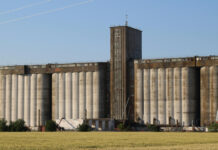WHEN a production or manufacturing facility is built, everything is new and operating optimally.
Over time, equipment deteriorates – or modifications are made with the best intentions, but not always with energy efficiency in mind. It is therefore good practice to do regular energy assessments to ensure for example that steam traps are working correctly, and there are no steam piping ‘dead legs’.
“Someone may move a machine, and the line which used to provide steam energy is not properly isolated – but is still receiving energy. This is what we term a ‘dead leg’ and is extremely inefficient,” explains Brenainn Cross, technical director at specialist operations and maintenance service provider to the steam and boiler sector, Associated Energy Services (AES).
Detail is in the data
AES engages clients regarding precisely what equipment is on site, and how their steam process operates, which entails requesting data from their systems. Where reliable data cannot however be provided – as sometimes is the case – AES employs data capturing equipment to fill in the gaps.
When it comes to doing an accurate energy assessment, Cross says understanding a company’s steam offtake is vital.
“We want to know what their process looks like, how much energy they use, how they use it and when. Some companies have a very flat profile where there is a very consistent offtake – while others have a batch-driven process with peaks and troughs throughout their steam offtake cycle.
Finding the energy blind spots
Cross maintains that a lack of data around the conversion rate of fuel into energy is a substantial blind spot for many manufacturing or processing companies.
Most focus on fuel consumption versus the quantity of product made – a process known as ‘fuel to product out’ costing – rather than monitoring how efficiently fuel is converted to steam energy and thereafter how much steam energy is used to produce the product.
He admits, however, that there is no single ‘silver bullet’, and that energy assessments must be carried out on a case-by-case basis.
To this point, AES’s advice may extend beyond the boiler itself, to issues such as water treatment and asset care
The power of change – and metrics
Cross describes an energy assessment as a “conversation continuing throughout AES’s relationship with the client”.
“We know the baseline situation when we take over the boiler operations and maintenance, however incoming staff and management may not. Therefore – from a perception perspective – it is very important that the client is consistently made aware of the implications were no energy assessments or optimisation to be done – and how pivotal these are to the long-term productivity and sustainability of their facility,” he says.
Energy savings speak for themselves. An example is the 21% and 38% improvement respectively registered at two food processing plants where AES is responsible for energy optimisation.
Assessments ‘fuel’ change
He adds that AES has been asked to assess many unusual prospective fuel types, including the use of process byproduct streams as potential fuels. “An assessment often proves that the potential energy generation does not warrant the capital expenditure required to make the fuel change,” he explains.
The game-changer is the baseline cost of the energy, notes Cross, citing a recent energy assessment where a fuel switch for a client has the potential to unlock significant operational savings.















